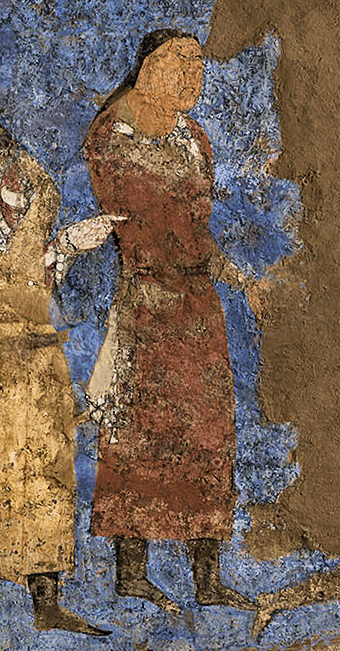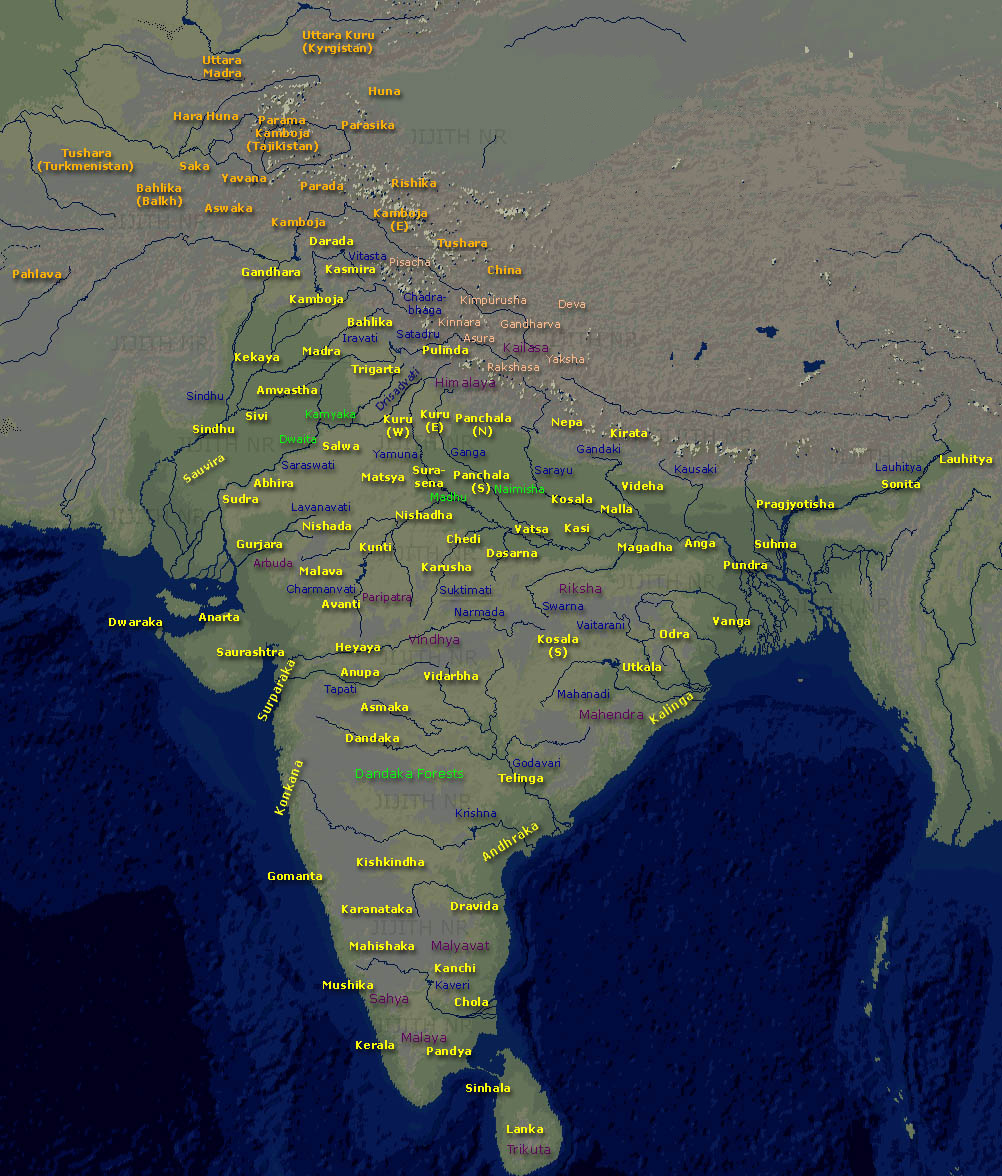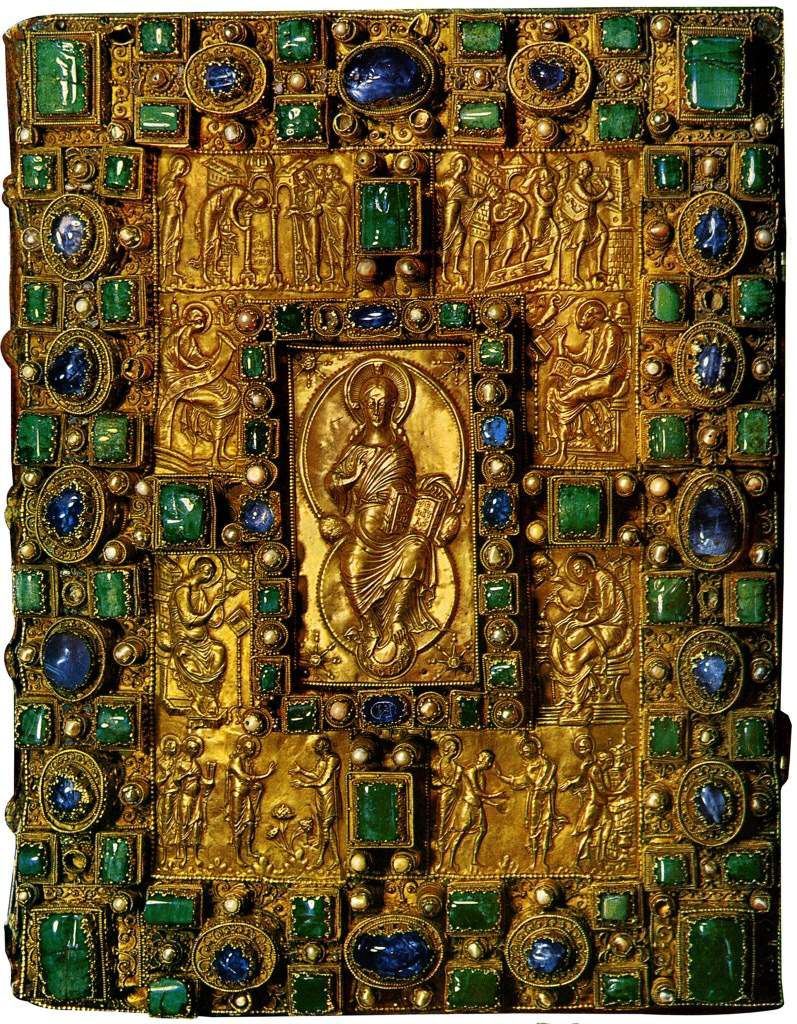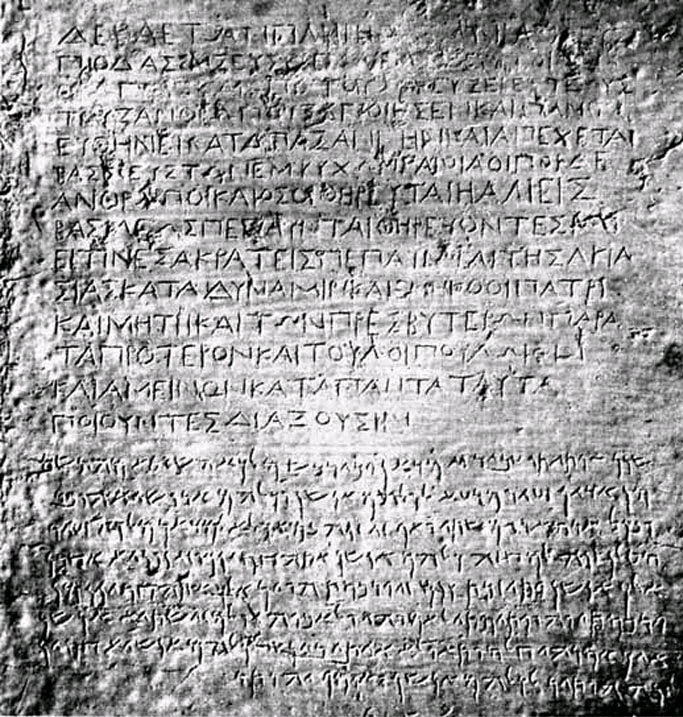|
Tokhara
Tokharistan (formed from "Tokhara" and the suffix ''-stan'' meaning "place of" in Persian) is an ancient Early Middle Ages name given to the area which was known as Bactria in Ancient Greek sources. In the 7th and 8th century CE, Tokharistan came under the rule of the Chinese Empire, administered by the Protectorate General to Pacify the West. Today, Tokharistan is fragmented between Uzbekistan, Tajikistan and Afghanistan. Names of Tokharistan Several languages have used variations of the word "Tokhara" to designate the region: * Tokharistan may appear in ancient India sources as the Kingdom of Tushara, to the northwest of India. "Tushara" is the Sanskrit word for "snowy" "frigid", and is known to have been used to designate the country of Tukhara. In Sanskrit, it became तुखार (Tukhāra). * In ancient Greek, the name was Tokharoi ( grc, Τόχαροι ) or Thaguroi. * Tochari for Latin historians. * The name "Tokhara" appeared in the 4th century CE, in Buddhist text ... [...More Info...] [...Related Items...] OR: [Wikipedia] [Google] [Baidu] |
Western Turks
The Western Turkic Khaganate () or Onoq Khaganate ( otk, 𐰆𐰣:𐰸:𐰉𐰆𐰑𐰣, On oq budun, Ten arrow people) was a Turkic khaganate in Eurasia, formed as a result of the wars in the beginning of the 7th century (593–603 CE) after the split of the Turkic Khaganate (founded in the 6th century on the Mongolian Plateau by the Ashina clan) into a western and an eastern Khaganate. The whole confederation was called ''Onoq'', meaning "ten arrows". According to a Chinese source, the Western Turks were organized into ten divisions. The khaganate's capitals were Navekat (summer capital) and Suyab (principal capital), both situated in the Chui River valley of Kyrgyzstan, to the east of Bishkek. Tong Yabgu's summer capital was near Tashkent and his winter capital Suyab. The Western Turkic Khaganate was subjugated by the Tang dynasty in 657 and continued as its vassal until their collapse. History The first Turkic Khaganate was founded by Bumin in 552 on the Mongolian P ... [...More Info...] [...Related Items...] OR: [Wikipedia] [Google] [Baidu] |
Bactria
Bactria (; Bactrian: , ), or Bactriana, was an ancient region in Central Asia in Amu Darya's middle stream, stretching north of the Hindu Kush, west of the Pamirs and south of the Gissar range, covering the northern part of Afghanistan, southwestern Tajikistan and southeastern Uzbekistan. Called "beautiful Bactria, crowned with flags" by the Avesta, the region is one of the sixteen perfect Iranian lands that the supreme deity Ahura Mazda had created. One of the early centres of Zoroastrianism and capital of the legendary Kayanian kings of Iran, Bactria is mentioned in the Behistun Inscription of Darius the Great as one of the satrapies of the Achaemenid Empire; it was a special satrapy and was ruled by a crown prince or an intended heir. Bactria was the centre of Iranian resistance against the Macedonian invaders after the fall of the Achaemenid Empire in the 4th century BC, but eventually fell to Alexander the Great. After the death of Alexander, Bactria was annex ... [...More Info...] [...Related Items...] OR: [Wikipedia] [Google] [Baidu] |
Sasanian Empire
The Sasanian () or Sassanid Empire, officially known as the Empire of Iranians (, ) and also referred to by historians as the Neo-Persian Empire, was the History of Iran, last Iranian empire before the early Muslim conquests of the 7th-8th centuries AD. Named after the Sasanian dynasty, House of Sasan, it endured for over four centuries, from 224 to 651 AD, making it the longest-lived List of monarchs of Persia, Persian imperial dynasty. The Sasanian Empire succeeded the Parthian Empire, and re-established the Persians as a major power in late antiquity alongside its neighbouring arch-rival, the Roman Empire (after 395 the Byzantine Empire).Norman A. Stillman ''The Jews of Arab Lands'' pp 22 Jewish Publication Society, 1979 International Congress of Byzantine Studies ''Proceedings of the 21st International Congress of Byzantine Studies, London, 21–26 August 2006, Volumes 1–3'' pp 29. Ashgate Pub Co, 2006 The empire was founded by Ardashir I, an Iranian ruler who rose to po ... [...More Info...] [...Related Items...] OR: [Wikipedia] [Google] [Baidu] |
Guzgan
Guzgan ( fa, گوزگان, also known as Gozgan, Guzganan or Quzghan, in Arabic Juzjan or Juzjanan) was a historical region and early medieval principality in what is now northern Afghanistan. Etymology The area was known as "Guzgan" or in the plural form "Guzganan", whence Arabic "Juzjan"/"Juzjanan". Orientalist Vladimir Minorsky derived the name from a word meaning "walnut", a product for which the area is still known today. The 19th-century scholar Henry George Raverty suggested that the plural form emerged from the division of the country in two parts by the river Murghab. Geography The boundaries of Guzgan were never well defined and fluctuated wildly over time. They certainly bear no relation to the modern administrative boundaries of Jowzjan Province, named after it, or the neighbouring Faryab Province, but historically included the lands around the towns of Maymana (capital of Faryab province), Andkhuy, Shibarghan (capital of Jowzjan Province) and Sar-e Pol (ca ... [...More Info...] [...Related Items...] OR: [Wikipedia] [Google] [Baidu] |
Balkh
), named for its green-tiled ''Gonbad'' ( prs, گُنبَد, dome), in July 2001 , pushpin_map=Afghanistan#Bactria#West Asia , pushpin_relief=yes , pushpin_label_position=bottom , pushpin_mapsize=300 , pushpin_map_caption=Location in Afghanistan , subdivision_type=Country , subdivision_name= , subdivision_type1=Province , subdivision_name1=Balkh Province , subdivision_type2=District , subdivision_name2=Balkh District , population_as_of=2021 , population_footnotes= , population_blank1_title=City , population_blank1=138,594 , population_blank2_title=Religions , timezone=+ 4.30 , coordinates= , blank_name=Climate , blank_info= BSk Balkh (; prs, , ''Balkh''; xbc, Βάχλο, ''Bákhlo''; grc, Βάκτρα, ''Báktra'') is a town in the Balkh Province of Afghanistan, about northwest of the provincial capital, Mazar-e Sharif, and some south of the Amu Darya river and the Uzbekistan border. Its population was recently estimated to be 138,594. Balkh was historically an ancient pl ... [...More Info...] [...Related Items...] OR: [Wikipedia] [Google] [Baidu] |
Ancient Greece
Ancient Greece ( el, Ἑλλάς, Hellás) was a northeastern Mediterranean civilization, existing from the Greek Dark Ages of the 12th–9th centuries BC to the end of classical antiquity ( AD 600), that comprised a loose collection of culturally and linguistically related city-states and other territories. Most of these regions were officially unified only once, for 13 years, under Alexander the Great's empire from 336 to 323 BC (though this excludes a number of Greek city-states free from Alexander's jurisdiction in the western Mediterranean, around the Black Sea, Cyprus, and Cyrenaica). In Western history, the era of classical antiquity was immediately followed by the Early Middle Ages and the Byzantine period. Roughly three centuries after the Late Bronze Age collapse of Mycenaean Greece, Greek urban poleis began to form in the 8th century BC, ushering in the Archaic period and the colonization of the Mediterranean Basin. This was followed by the age of Classica ... [...More Info...] [...Related Items...] OR: [Wikipedia] [Google] [Baidu] |
Early Middle Ages
The Early Middle Ages (or early medieval period), sometimes controversially referred to as the Dark Ages, is typically regarded by historians as lasting from the late 5th or early 6th century to the 10th century. They marked the start of the Middle Ages of European history, following the decline of the Western Roman Empire, and preceding the High Middle Ages ( 11th to 13th centuries). The alternative term '' late antiquity'', for the early part of the period, emphasizes elements of continuity with the Roman Empire, while ''Early Middle Ages'' is used to emphasize developments characteristic of the earlier medieval period. The period saw a continuation of trends evident since late classical antiquity, including population decline, especially in urban centres, a decline of trade, a small rise in average temperatures in the North Atlantic region and increased migration. In the 19th century the Early Middle Ages were often labelled the ''Dark Ages'', a characterization base ... [...More Info...] [...Related Items...] OR: [Wikipedia] [Google] [Baidu] |
Uzbekistan
Uzbekistan (, ; uz, Ozbekiston, italic=yes / , ; russian: Узбекистан), officially the Republic of Uzbekistan ( uz, Ozbekiston Respublikasi, italic=yes / ; russian: Республика Узбекистан), is a doubly landlocked country located in Central Asia. It is surrounded by five landlocked countries: Kazakhstan to the north; Kyrgyzstan to the northeast; Tajikistan to the southeast; Afghanistan to the south; and Turkmenistan to the southwest. Its capital and largest city is Tashkent. Uzbekistan is part of the Turkic world, as well as a member of the Organization of Turkic States. The Uzbek language is the majority-spoken language in Uzbekistan, while Russian is widely spoken and understood throughout the country. Tajik is also spoken as a minority language, predominantly in Samarkand and Bukhara. Islam is the predominant religion in Uzbekistan, most Uzbeks being Sunni Muslims. The first recorded settlers in what is now Uzbekistan were Eastern Irania ... [...More Info...] [...Related Items...] OR: [Wikipedia] [Google] [Baidu] |
Afghanistan
Afghanistan, officially the Islamic Emirate of Afghanistan,; prs, امارت اسلامی افغانستان is a landlocked country located at the crossroads of Central Asia and South Asia. Referred to as the Heart of Asia, it is bordered by Pakistan to the east and south, Iran to the west, Turkmenistan to the northwest, Uzbekistan to the north, Tajikistan to the northeast, and China to the northeast and east. Occupying of land, the country is predominantly mountainous with plains in the north and the southwest, which are separated by the Hindu Kush mountain range. , its population is 40.2 million (officially estimated to be 32.9 million), composed mostly of ethnic Pashtuns, Tajiks, Hazaras, and Uzbeks. Kabul is the country's largest city and serves as its capital. Human habitation in Afghanistan dates back to the Middle Paleolithic era, and the country's Geostrategy, strategic location along the historic Silk Road has led it to being described, pict ... [...More Info...] [...Related Items...] OR: [Wikipedia] [Google] [Baidu] |
Wakhan
Wakhan, or "the Wakhan" (also spelt Vakhan; Persian and ps, واخان, ''Vâxân'' and ''Wāxān'' respectively; tg, Вахон, ''Vaxon''), is a rugged, mountainous part of the Pamir, Hindu Kush and Karakoram regions of Afghanistan. Wakhan District is a district in Badakshan Province. Geography The Wakhan is located in the extreme north-east of Afghanistan. It contains the headwaters of the Amu Darya (Oxus) River, and was an ancient corridor for travellers from the Tarim Basin to Badakshan. The geographic position of Wakhan between China, India, and Bactria allowed it to play a major role in trade in the ancient world. Until 1883, the Wakhan included the whole valley of the Panj River and the Pamir River, as well as the upper flow of the Panj River known as the Wakhan River. An 1873 agreement between UK and Russia split the Wakhan by delimiting spheres of influence for the two countries at the Panj and Pamir rivers. [...More Info...] [...Related Items...] OR: [Wikipedia] [Google] [Baidu] |
Kandahar
Kandahar (; Kandahār, , Qandahār) is a city in Afghanistan, located in the south of the country on the Arghandab River, at an elevation of . It is Afghanistan's second largest city after Kabul, with a population of about 614,118. It is the capital of Kandahar Province as well as the de facto capital of the Taliban, formally known as the Islamic Emirate of Afghanistan. It also happens to be the centre of the larger cultural region called Loy Kandahar. In 1709, Mirwais Hotak made the region an independent kingdom and turned Kandahar into the capital of the Hotak dynasty. In 1747, Ahmad Shah Durrani, founder of the Durrani dynasty, made Kandahar the capital of the Afghan Empire. Historically this province is considered as important political area for Afghanistan revelations. Kandahar is one of the most culturally significant cities of the Pashtuns and has been their traditional seat of power for more than 300 years. It is a major trading center for sheep, wool, cotton, silk, fel ... [...More Info...] [...Related Items...] OR: [Wikipedia] [Google] [Baidu] |
.png)




.jpg)


